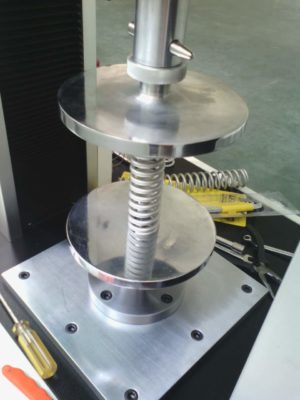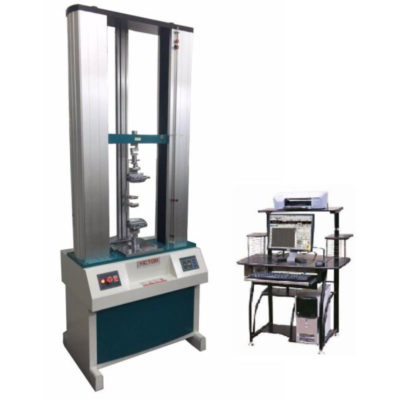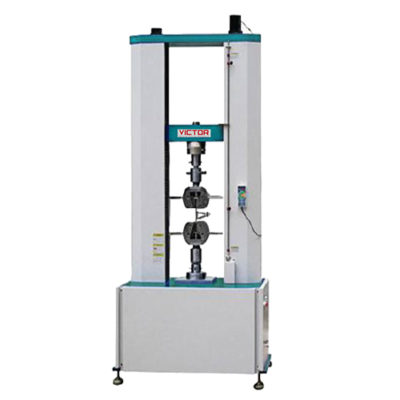ASTM is an international standards organization that is located in the United States of America. The purpose it was introduced to the industry is to publish technical standard agreements for various materials, product, systems and others. Among the ASTM standards that are often use in the industry is ASTM D1621.
ASTM D1621 Test Standard
Description For ASTM D1621
ASTM D1621 is an international test standard design to determine the compressive properties of rigid cellular materials, particularly expanded plastics or foams. These materials is use by a broad range of industries and applications.
Manufacturing industries such as the construction industry often use this standard ,Plastics and foams must be flexible enough to withstand wall installations and sometimes strong enough to support entire roofing systems.
The specimen dimensions for this testing are a square or the circular cross-sectional area between 4 and 36 square inches and a height between 1 inch and the specimen’s width (or diameter) and These test specimens are carefully prepare so the faces are parallel to each other and perpendicular to the sides. Nowadays, ASTM standards are highly preferred by both corporate or government bodies. In Malaysia, most industries use the ASTM D1621 standard in their companies, and The Malaysian government has also adopted this standard.
Basically, ASTM D1621 measures the compressive strength of the material. This test can be perform on using Universal Testing Machine (UTM).
The following are the properties commonly measure through ASTM D1621:
- The calculations that can be derived from this method include compressive strength, compressive strain, compressive stress and Modulus of Elasticity.
Specimens For ASTM D1621
1. Plastics and Foams
Grips and Jigs For ASTM D1621
1. Compression platen grip
To perform this test, the compression tool used must be flat. This is because uneven surfaces will interfere with the test results.

- For hard materials such as steel, plastics, stone etc.
- Hardened steel 58 HRC, black phosphate coating
- Temperature range: 0°C – +350°C
- Nickel plated: -70°C – +350°C
- Max capacity depends on the size of coupling
- The size of the compression platen is 5cm to 20cm.
Type of UTM machine
We recommend using UTM machines with a capacity of 5kN-50kN. It depends on the strength of the materials. We also recommend using dual-column types.
1. VEW 2308

The machine is design by mechanical-electrical integration, the composition of the force-measuring Sensor, transmitter, microprocessor, mechanism of load drive, computer and color inkjet printer. The high-precision electronic motor can be set to five-speed, the components are connect by plug-way, Floor-standing models, it is taken account of modern industrial design and ergonomics in modelling and Coating. It can be test with all the materials in the stretch, compression, bending, shear, embedded relay, Peeling. tearing, crack, etc, such as rubber, plastics, leather, metal, nylon wire, fabric, paper, aerospace, packaging, construction, petrochemical, electrical, vehicle, etc.
The implementation of standards and standard configuration:
- GB/T4689.20-1996 Measuring fastness of leather’s adhesion
- QB/T2710-2005 Measuring leather’s expansion and the rate of elongation
- QB/T2711-2005 measuring tear force of leather
- QB/T2712-2005 measuring leather’s strength and stretch of spherical crack test
1. VEW 2302

VEW 2302 Computer Servo Type Universal Testing Machine is a new material testing machine that combine with the electronic technology and mechanical transmission, it has accurate load speed, range of force measurement, has high accuracy and sensitivity for the load, displacement measurement and control, it also can be test the constant-velocity loading, constant- velocity displacement. This machine is simple to operate, especially suitable for controlling quality in the production line, this series of machine is mainly apply to test the non-metallic and metallic materials which the load is less than 30ton.
Main Function:
- Mainly apply to test the metallic and non-metallic materials in tension, compression, bending, shear, peel, tear or two-points extensions and others.
- Can be use for materials such as rubber, plastic, wire and cable, optical fiber and cable, safe belt, leather belt composite materials, plastic profiles, waterproof membrane, steel, copper, profiles, spring steel, bearing steel, stainless steel (as well as other high-hardness steel), castings, plate, strip, non-ferrous metal wire.
Test Procedure
- Prepare the specimen as describe in the standard. The specimen should be square or circular in cross-section with a minimum of 25.8 cm2 and a maximum of 232 cm2. Minimum height should be 25.4 mm and the maximum height shouldn’t exceed the width or the diameter of the specimen.
- Place the specimen between the compressive plates and make sure it parallel to the surface.
- Align the specimen until it is exactly in the centre of the compression plates. Attach the deflectometer.
- Adjust the crosshead until it makes contact with the compression fixture.
- Apply a compressive force at a crosshead displacement of 2.5 mm/min for each 25.4 mm of specimen thickness.
- Stop the test when the sample is compressed by 13% of its height. Record force and deformation data.
Measurement
- If no yield point is observe determine the force at 10% deformation.
- If a yield point is observe, report the force at the yield point and determine the per cent deformation at the yield point.
